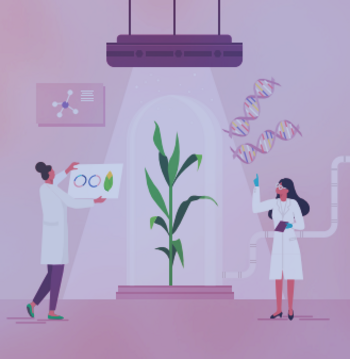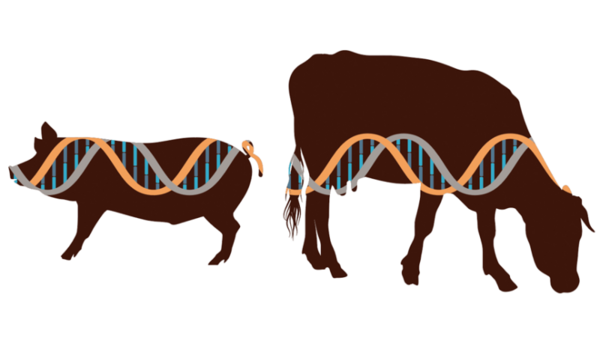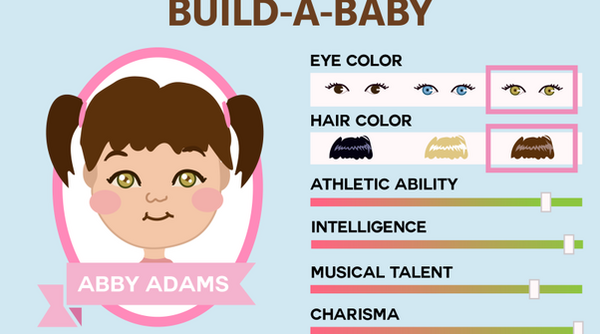In May, the intensity of the coronavirus disease 2019 (COVID-19) seems to have weakened. While the world returns to normal, scientists are also eager to progress their research again. One of the most actively studied scientific research examples is genetic scissor technology. It sounds quite fascinating that humans can edit genes, but there are also some hidden flaws behind this technology. In this regard, the Sungkyun Times (SKT) will look into what genetic scissors are, the flaws of the technology, and some possible solutions to these flaws.
What Are Genetic Scissors?
Structures and History of Genetic Scissors
Genetic scissors are a technology that can cut and modify a specific part of Deoxyribonucleic Acid (DNA). In detail, they are divided into three generations based on the elements forming them. The first generation of genetic scissors is Zinc Finger Nucleases (ZFNs). They are a complex of the Zinc Finger, a protein that combines with specific DNA, and Foki, an enzyme that cuts DNA. However, ZFNs cannot edit DNA as exquisitely as the Zinc Finger only recognizes bases that are big enough for it to find. To solve the flaw of ZFNs, Transcription Activator-Like Effector Nucleases (TALENs) emerged as second-generation genetic scissors. Their basic structure is almost the same as ZFNs, but the second scissors use TALEN as a protein instead of the Zinc Finger to recognize bases much more precisely. Scientists are currently using the third-generation scissors, Clustered Regularly Interspaced Short Palindromic Repeats (CRISPR-Cas9) system. They are far more accurate, cheaper, and easier to produce than the former scissors, and they can play a significant role in the commercialization of the technology. Since rapid reproduction is essential for the commercialization in medical and biotechnology, where genetic scissors will mainly be used, CRISPR-Cas9 is now widely used among experts.

Utilize Genetic Scissors in Various Fields

Currently, genetic scissors are used to improve the traits of plants and animals and treat human diseases. In the case of plants, genome-edited agricultural products are spotlighted as a substitute for Genetically Modified Organisms (GMO) products. Unlike GMOs that insert external DNA into the product, genome-edited products are much safer because genetic scissors help them modify only internal traits. Due to the safety of the technology, the United States Department of Agriculture has announced that they would stop regulating genome-edited plants technology in 2018. Research on animals’ trait improvement using genetic scissors is also vibrant. For example, in 2020, the National Institute of Fisheries Science succeeded in increasing the muscle mass of flatfish by 25% by removing genes that prevent muscle growth using CRISPR-Cas9. In terms of human diseases, a research team at the University of California, Berkley developed a diagnostic test to detect COVID-19 in five minutes using modified CRISPR-Cas9 last year: when the guide Ribonucleic Acid (RNA) of CRISPR binds to the target virus with fluorescent particles, the scissors enzyme cuts the RNA to allow the fluorescent particles to emit light and check the presence of the virus.

Dark Sides of Genetic Scissors
Technological Flaws in Practical Application
While editing target genes using genetic scissors, the off-target effect could be a severe problem. The off-target effect means cutting untargeted points when using genetic scissors, causing unintended mutations. According to the Wellcome Sanger Institute, a British genetics research center, the unexpected mutations caused by CRISPR-Cas9 may develop into a serious level of dielectric damage. Given the fact that the rearrangement of DNA is complex and unpredictable, these effects must not be overlooked. Moreover, research also proves that genetic scissors could spark immune reactions inside the human body. According to Stanford’s pediatric hematology researchers’ paper in 2018, there were 79% and 65% of subjects with antibodies or immune cells for two Cas9 molecules, respectively. Since the human immune system generates inflammation in the process of immune reaction, this phenomenon could be fatal to the human body. With the possibility of proliferation of cancer cells and the immune reaction which could prevent accurate genome editing, these flaws should be solved before the technology’s actual commercialization.
Genome Editing’s Impact on Human Life
As research using genetic scissors to edit a human embryo increases, ethical issues have arisen. Basically, there are two purposes of genome editing. The first purpose is to reinforce a human’s traits. This purpose gets much criticism because gene editing generates inequality problems and promotes eugenics, the study to select desired heritable characteristics. Eugenics has ethical issues such as human rights abuses, inequality, and damage to genetic diversity. Therefore, Park Byung-gi, a professor of Ethics Education at the Korea National University of Education, showed concerns about technology, saying, “Eugenics pursues qualitative differences of mankind, which would eventually lead to the result of violating equality of human dignity. Because of genome editing, the fact that all men are equally dignified might be denied.” The second purpose of gene editing is to treat genetic disorders. However, there are some concerns that the potential dangers of genome editing might surpass its benefits. As genome editing of a human embryo is irreversible, people cannot predict possible future side effects if they do not have sufficient knowledge about it. In this regard, organizations such as the International Society for Stem Cell Research also announced a statement denouncing every kind of gene editing.

Future of Genetic Scissors
Improve Technical Defects

Recently, a technology that supplements the lack of CRISPR-Cas9 has been developed. The technology uses similar principles to CRISPR-Cas9, but it inserts a molecule at guide RNA to cut only a single strand of DNA. According to researcher Kim Dae-sik at the Department of Chemistry at Seoul National University, the original CRISPR-Cas9 was less efficient in cutting, as both two strands of target DNA had to be removed. In this respect, this new technology would be more effective at treating genetic diseases such as cystic fibrosis. Although this new technology would take time to be commercialized, it is remarkable that it improved previous genetic scissors’ accuracy and efficiency. In addition, solutions for the immune reaction are also actively researched. A research team led by Kim Jin-soo, Director of Genome Engineering at the Institute for Basic Science, created a method of blocking immune reactions by removing the phosphoric acid group attached at the end of an RNA. As they found that the acid group triggered the immune reaction, the research team made new genetic scissors using RNA without phosphoric acid groups. They also achieved a high efficiency rating of 95% by using the latest genetic scissors in a receptor for the human immunodeficiency virus (HIV). This is meaningful because it was achieved through genetic scissors that avoid immune responses. Since the technology could provide resistance to HIV infections without affecting the immune system’s function, it is expected to be utilized for further treatment.
Allowable Range of Using Genetic Scissors
Between the two purposes of genome editing, genome editing for reinforcement purposes which modifies embryos’ personal traits makes the babies whose traits are changed bear the consequences throughout their whole life regardless of their will. This means that genome editing is only to instrumentalize an embryo, not improve the quality of his life. In particular, Prof. Park is opposed to genome editing for trait reinforcement, saying, “A person whose life was designed by genome editing has a completely unpredictable process of editing as an important part of their life. They may have serious problems at forming relationships with others and finding meaning in their life.” However, unlike genome editing of modifying traits, the use of genetic scissors for treating diseases could be justified. Treatments of genetic diseases such as HIV or sickle cell anemia are already being developed in many countries. Since these kinds of diseases are fatal to a baby’s life, treatment with genetic scissors may be allowed under parents’ approval to protect and promote a newborn’s future life. As technological flaws are not perfectly solved, research on genetic scissors to cure diseases should be conducted continuously.
Based on the results of studies so far, genetic scissors could bring enormous innovation to human life. From creating a superior breed of organisms and treating genetic diseases to freely deforming genes of every species, genetic scissors will make all these things possible. With strict regulations and ethical conversations preceded before the commercialization of genetic scissors, the future of humans will then be able to move in a better direction with the new technology.
